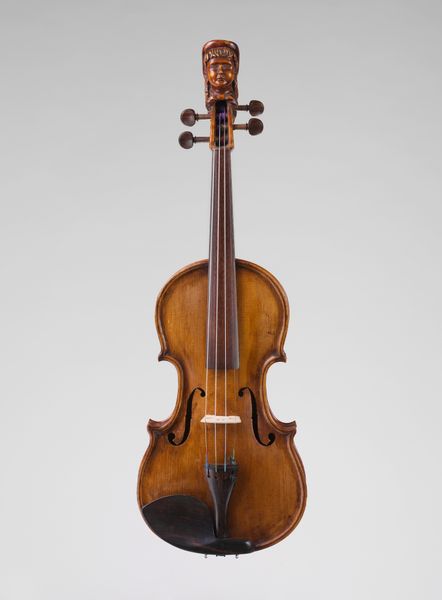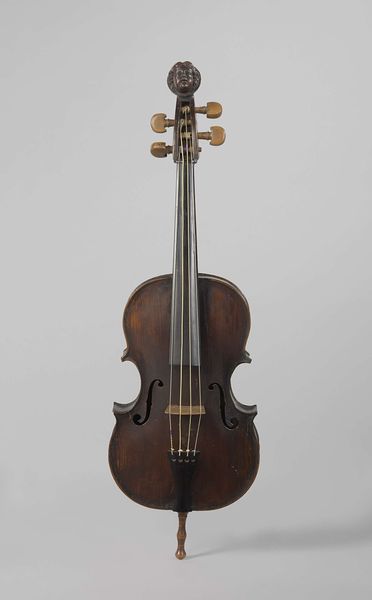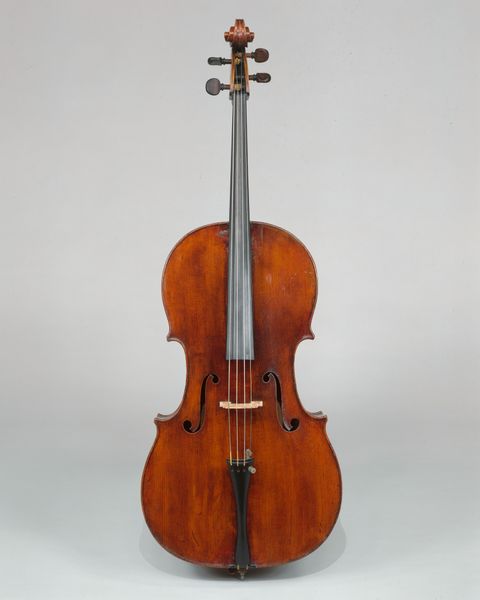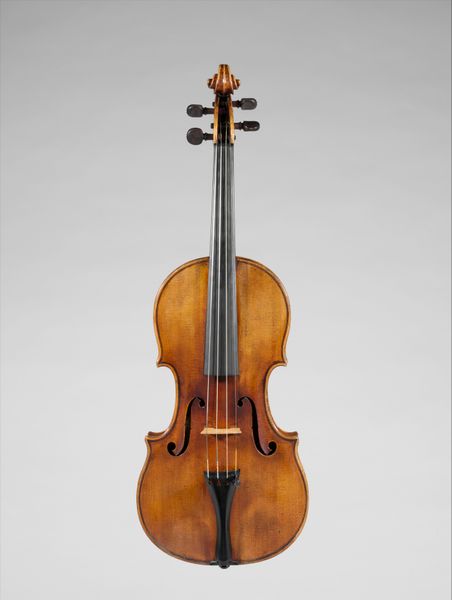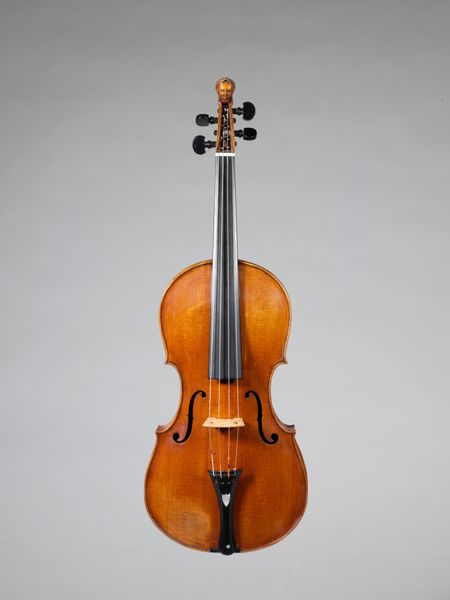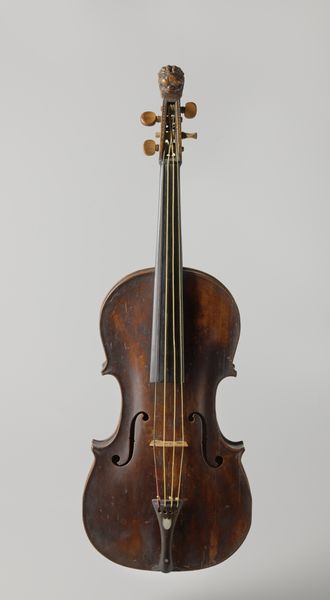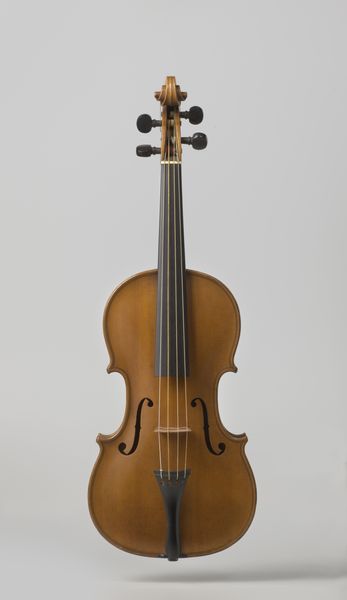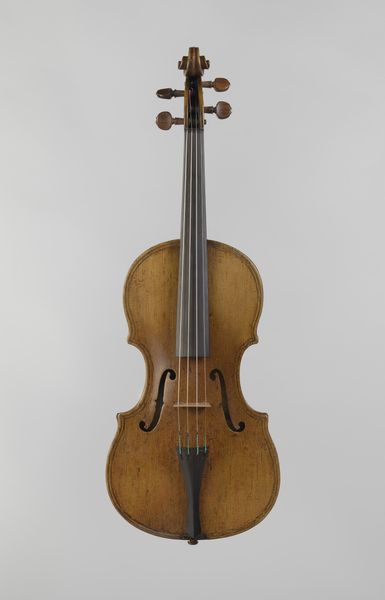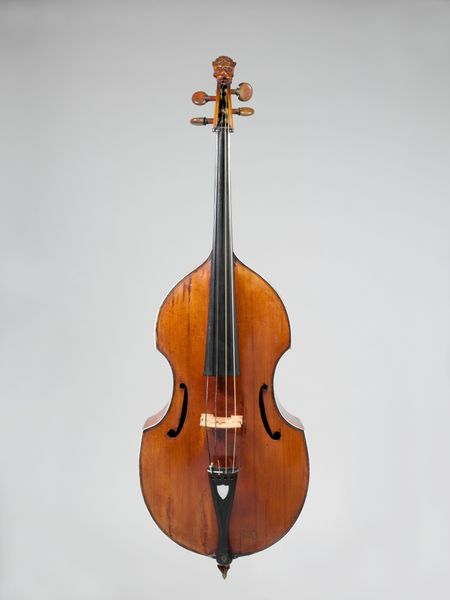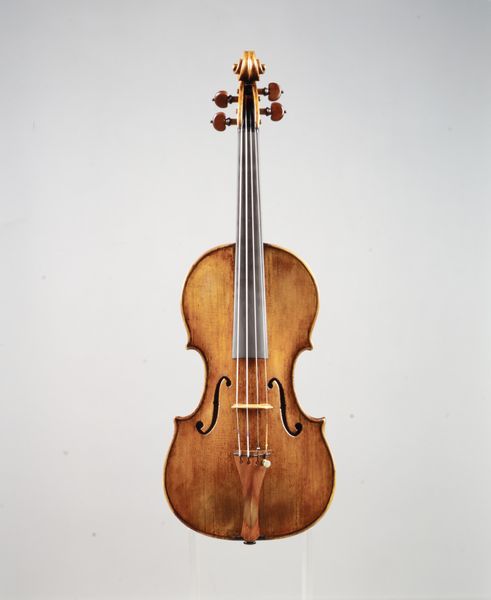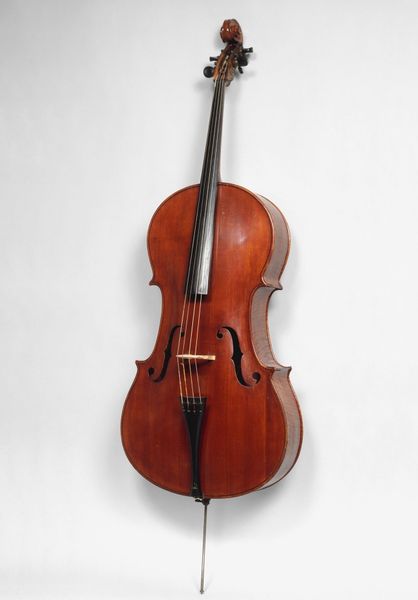
sculpture, wood
#
baroque
#
sculpture
#
sculpture
#
wood
#
musical-instrument
Dimensions: Height: 23 in. (58.4 cm) Width: 8 in. (20.3 cm)
Copyright: Public Domain
Curator: Here we have "The Antonius," a violin crafted in 1711 by the renowned Antonio Stradivari. You know, it’s housed here at the Metropolitan Museum of Art. Editor: What strikes me first is the honeyed patina of the wood. You can almost feel the centuries clinging to its surface, the weight of countless hands and music it must have known. Curator: Precisely. Stradivari was obsessively interested in material and method, selecting specific types of wood based on their acoustic properties, their grain, their density...Maple for the back, spruce for the top. And varnishes, ah, his varnish techniques are still a subject of much speculation! Editor: And all that intensive work, dedicated material study. It’s not simply high art—it speaks of meticulous labour and skilled craft. You imagine the hours he spent shaping, sanding, listening…Did he consider the players who would hold it generations later? Curator: It's amazing to imagine how the wood resonates as well after being strung, tightened and bowed and coaxed in such intense relationship for hundreds of years, right? These instruments develop unique personalities over time, they accrue histories along the way, voices... I bet if it could talk, what a story it would tell, the concerts, the intimate practice sessions, everything. Editor: Yes! And thinking about how those raw materials were sourced in the early 18th century – what systems of extraction, of trade and labour allowed a Cremonese artisan like Stradivari to access these specific materials and channel them into such exquisite forms? What about the culture of consumption that then venerated, commodified and circulated these violins as high-value objects? Curator: Food for thought, indeed. And as someone handling this instrument today, do you feel, in your imagination that you're becoming a piece of a string between creator and user, or even caretaker? Editor: Absolutely. Each time it's handled, preserved, displayed or played, new layers of meaning are deposited, woven into its enduring story. That intersection between the artisanal past and cultural present that imbues this instrument with its distinctive aura. Curator: Absolutely, to me at least, and looking closer, the violin seems to almost sing with its silent promise. Editor: A quiet revolutionary piece! It holds echoes of the past and prompts reflections on what shapes our present moment as much as our understanding of value and access and class, no?
Comments
No comments
Be the first to comment and join the conversation on the ultimate creative platform.
